Various
Posteds by Paul 12/02/12 - - - - - -- Scroll Down to See Discussion
Summary
- 001 and 002 – both Hebeloma
- 003 and 004 – both Gomphidius one huge (7in) and one small (1 in)
- 005 – Hebeloma
- 006 – 007 Pleurotus and Hebeloma
- 008 – 009 Melanoleuca and Marasmius
- 010 – 011 Cortinarius
- 012 - Armilaria and Cortinarius
Paul: I forgot to use a ruler – the tiles are 3 inches.
On my screen the tiles are 6+ inches – so the macro must be working??
I think I learned some “stuff” during the last few Tigard outings.
Lets see if I learned or just got more confused…
001 and 002 – both Hebeloma
003 and 004 – both Gomphidius one huge (7in) and one small (1 in)
005 – Hebeloma
006 – 007 Pleurotus and Hebeloma
008 – 009 Melanoleuca and Marasmius
010 – 011 Cortinarius
012 - Armilaria and Cortinarius
Dick B: 001 and 002 ? both Hebeloma
If you are using the Kit Scates Easy Key you are in the right area
but there are some fine distinctions that you should note.
The spore color of a Hebeloma is usually a dull brown while the spore color of a Cortinarius
is usually a orange or reddish (rusty) brown.
The spore color of the one on the right could be a Hebeloma
if it has the other characters noted in the key. It would probably be helpful to compare
spore color of a dull and rusty brown side by side.
Also Hebeloma will often be scurfy at the top while Cortinarius will
often have remnants of the cortina on the stipe.
003 and 004 ? both Gomphidius one huge (7in) and one small (1 in)
The color of the cap looks strange but otherwise looks like a Gomphidius
005 ? Hebeloma The color of the cap looks like a common Hebeloma but the spore color argues otherwise.
006 ? 007 Pleurotus and Hebeloma That's a long stipe on the Pleurotus but could be.
Did you get a spore print?
008 ? 009 Melanoleuca and Marasmius I can't say with any cetainty about these.
Melanoleuca are not usually found grouped together while Collybia (now Gymnopus) often are.
010 ? 011 Cortinarius Some genera in columns 5 & 6 are distinctly orangish.
Cortinarius spores are often orangish brown but not orange.
It's hard for me to say for sure without seeing the actual spore print but I believe the color
would be interpreted as orangish yellow.
That being said there is at least one genera in the first three columns that
sometimes has spores that are very close to orange.
Did you check to see if the stipe was fibrous or maybe fragile or chalk-like?
012 - Armilaria and Cortinarius Can't tell about the Armillaria.
Although the spore print looks more brown in this one I think the info above applies.
Fred: here's some points to ponder on the imaging
1. 001 pic a lot of good info in the pic.
Do consider adding a full speciment split straight down through the pileus, stem, base.
Then arrange those two pieces (1) cap up, (2)cap down,but stipe cavity evident
This will give good evidence of the stipe core, gill attachment,
cap flesh thickness, pilius plus a side profile of the cap shape.
Paul: I asked my wife what color the spore print (see attached) is and she said YELLOW.
I can see some orange in the yellow…. I looked at all the spore colors for Tricholoma,
Clitocybe and Leucopaxillus and the only mention of yellow is a creamy yellow
for Clitocybe inversa and its stipe is too narrow.
The outside 1/8 in of the stipe is firm and the inside is spongy.
It does not break like chalk. Not sure what to do next?
.jpg)
Dick B: So far so good. You ask someone else to confirm the color and what you say about the other genera is generally true. You say the stipe does not break like chalk but is it fibrous?
Can you peel a length of it or does it just crumble?
This is often a better test than breaks like chalk.-
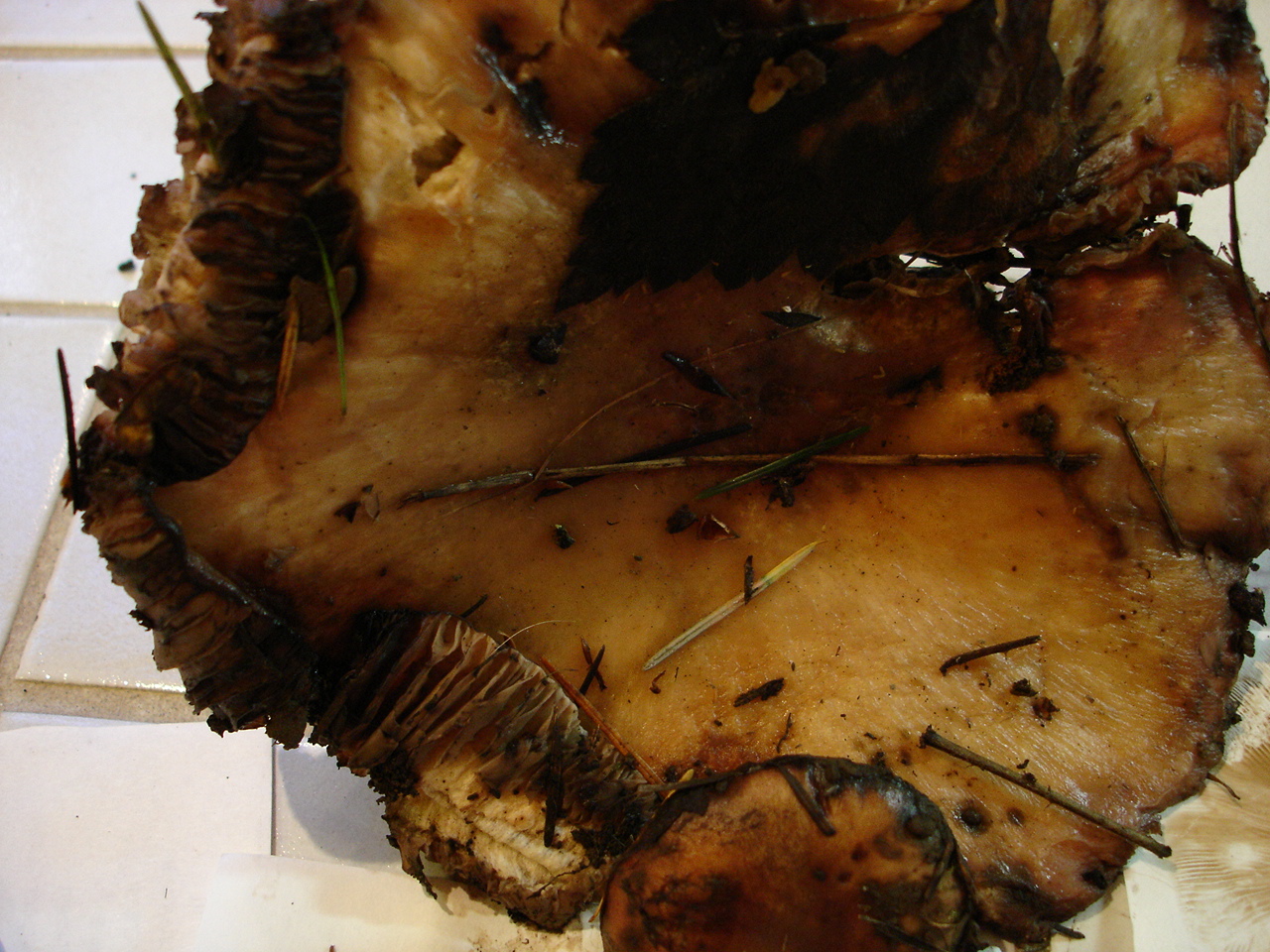
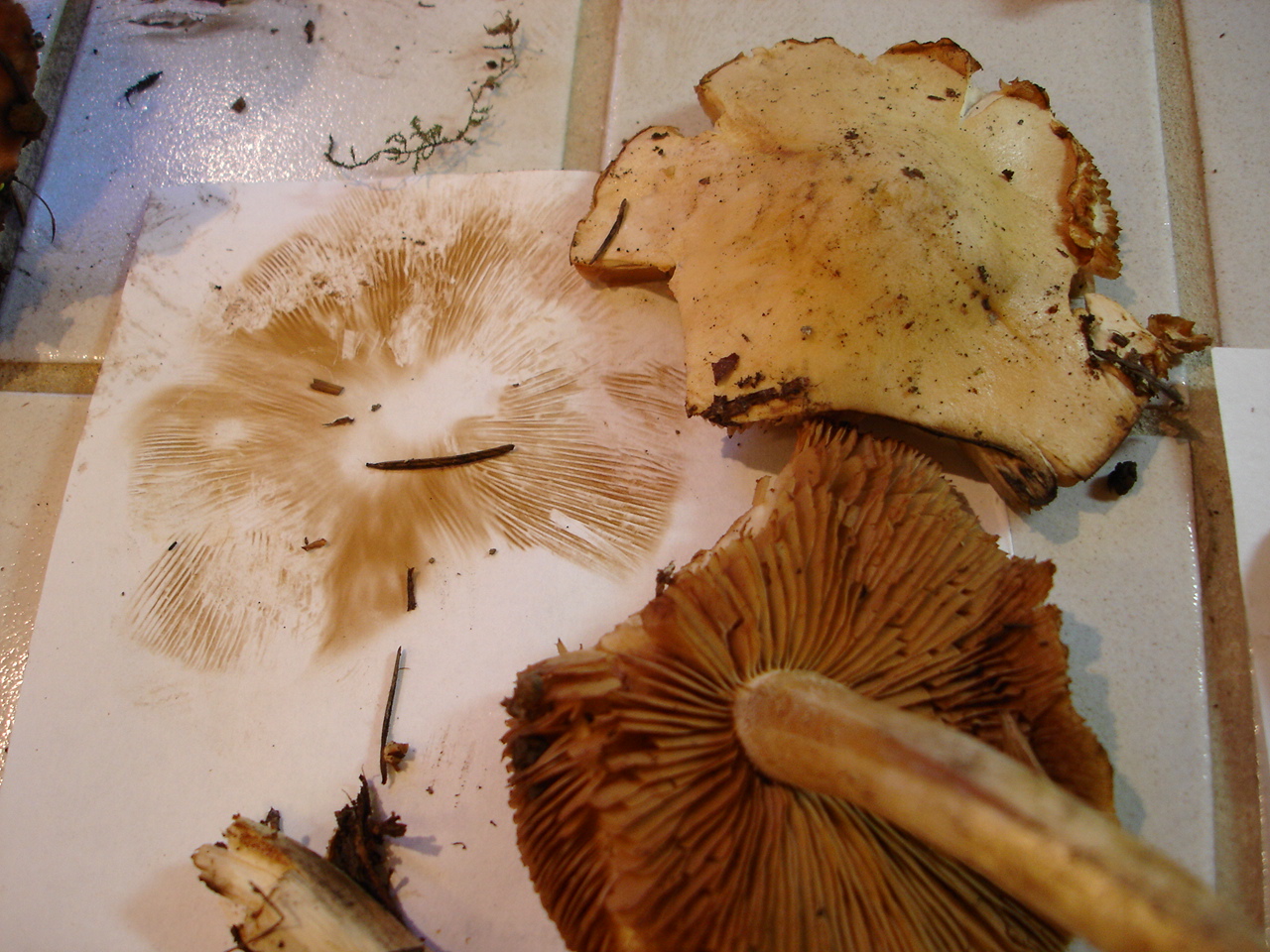
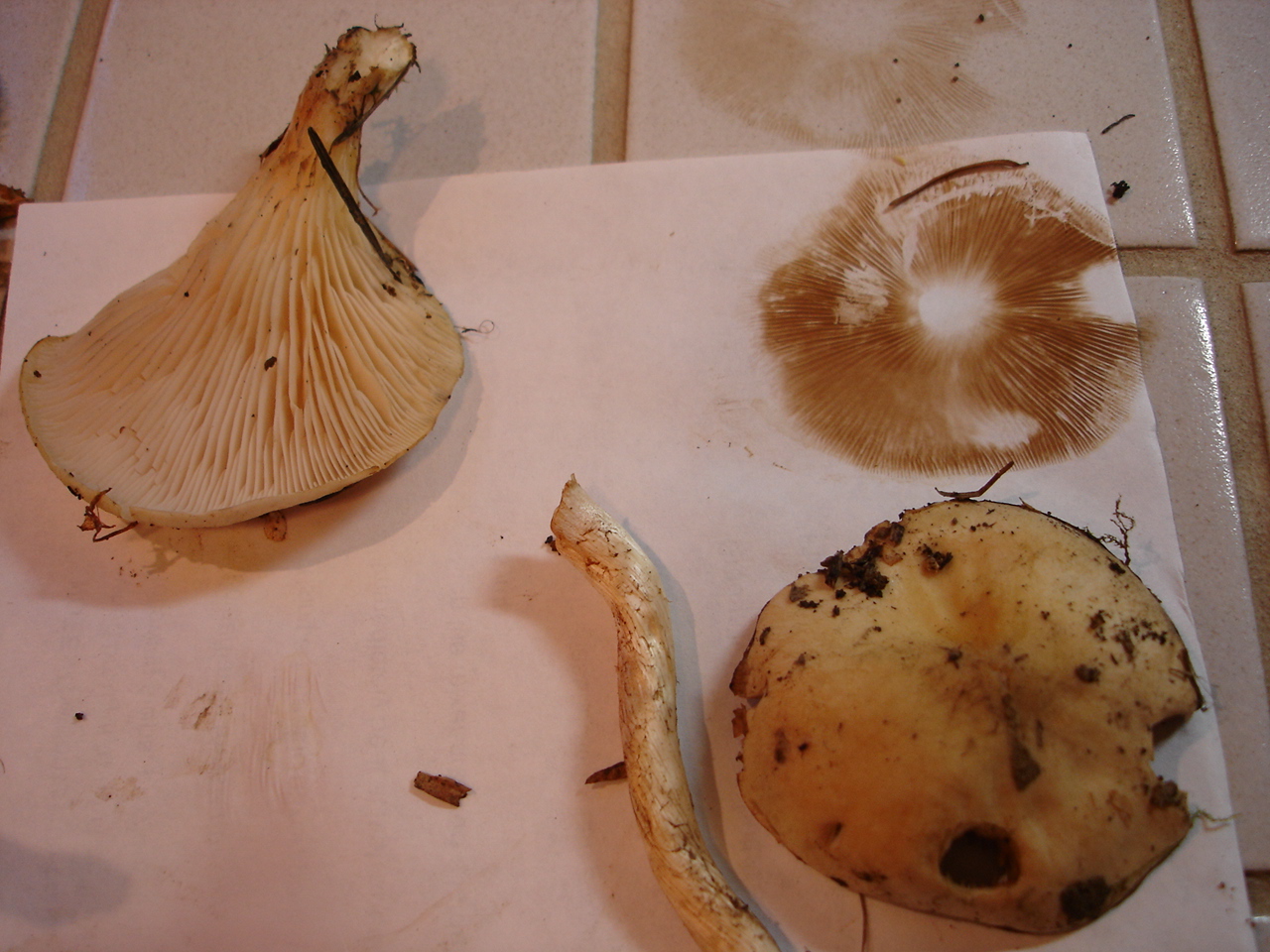
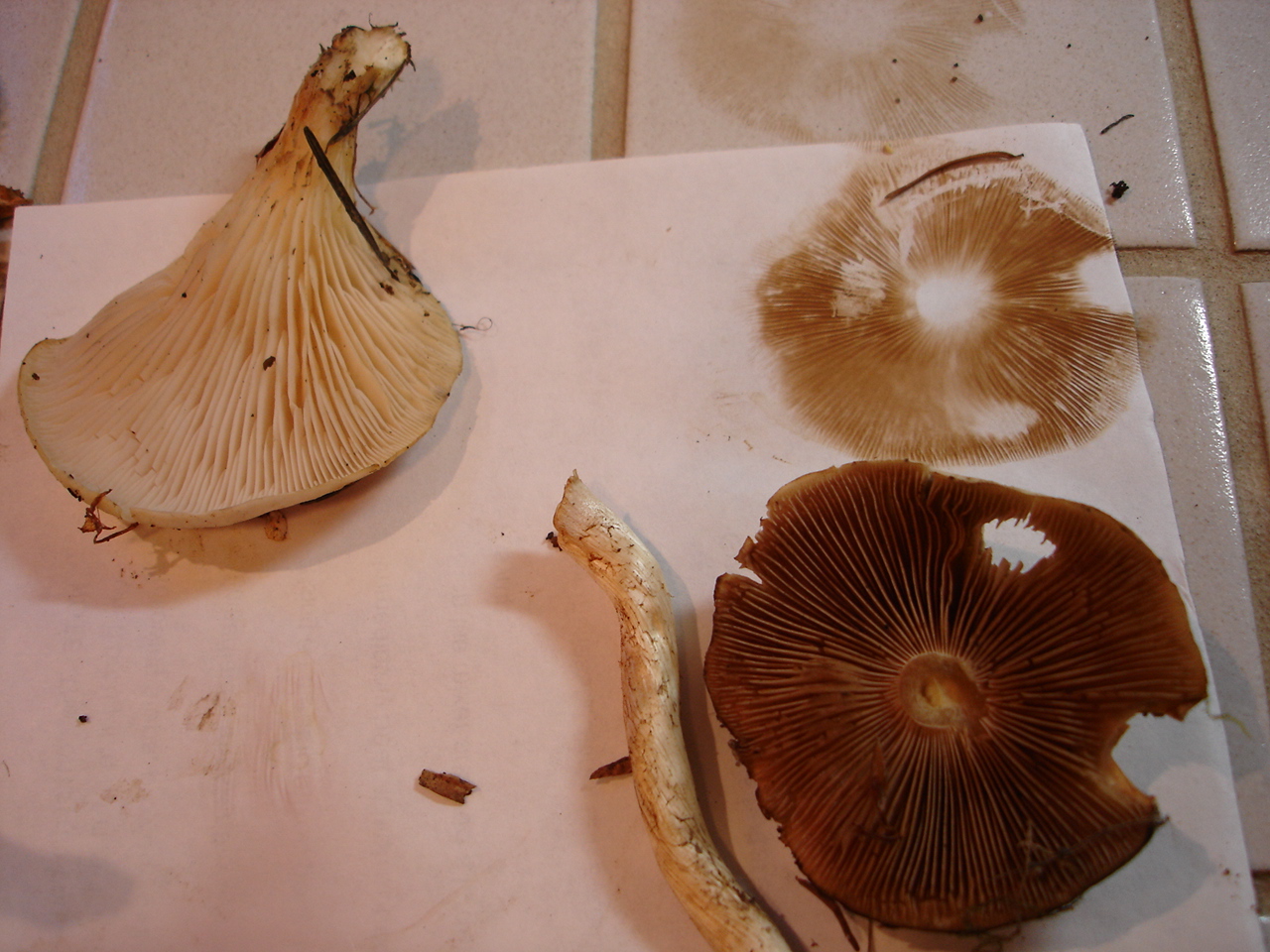

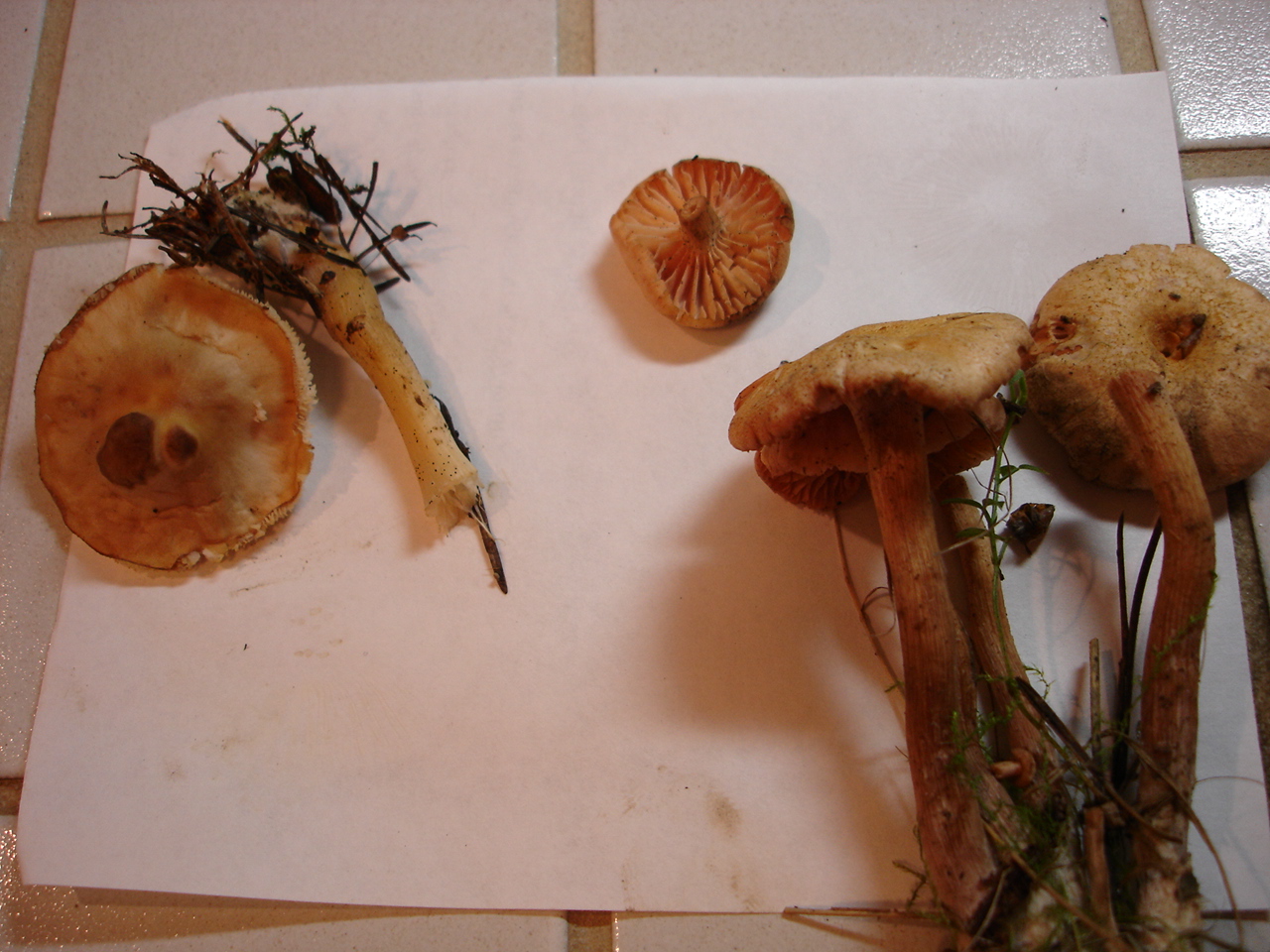
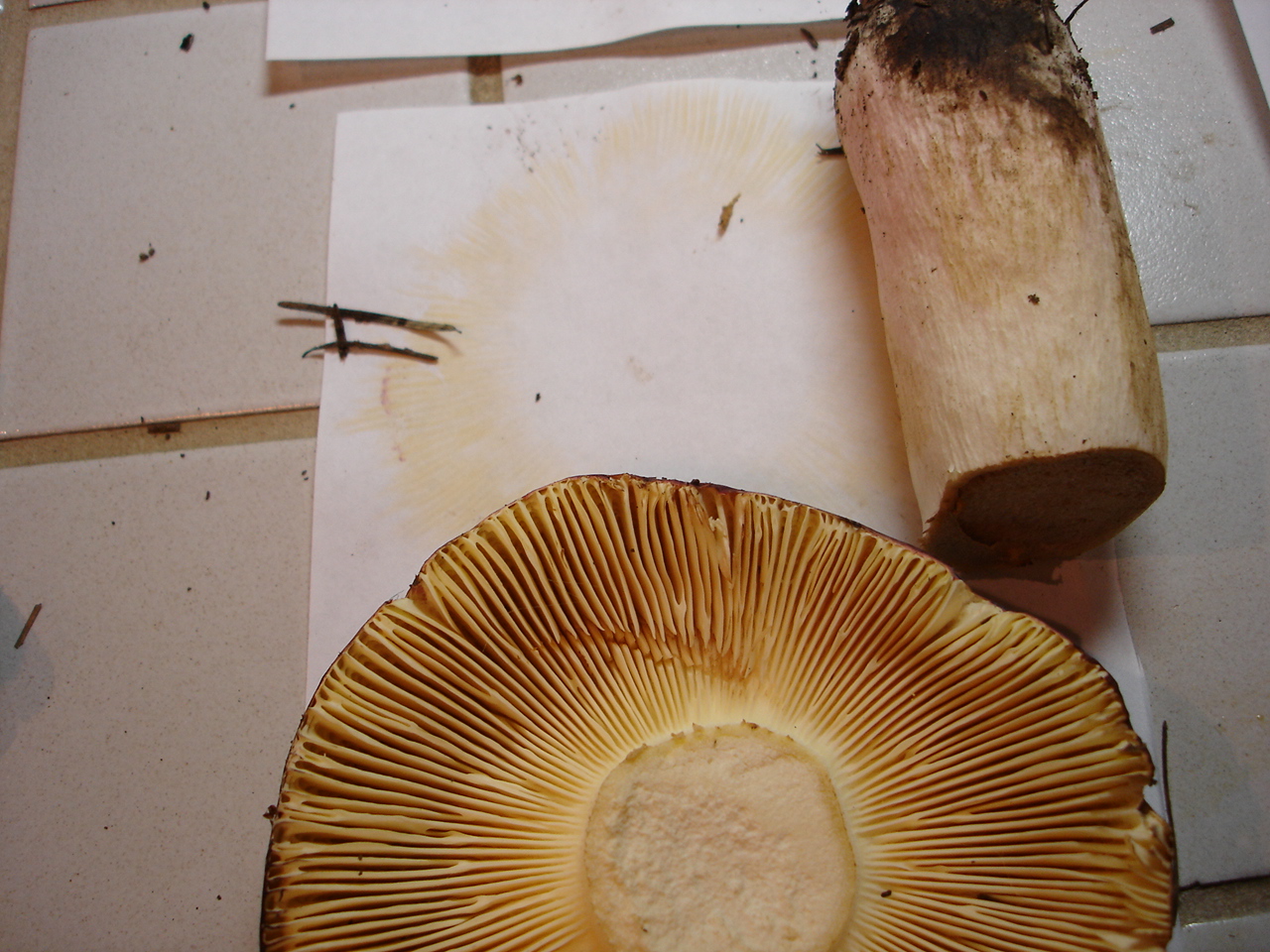
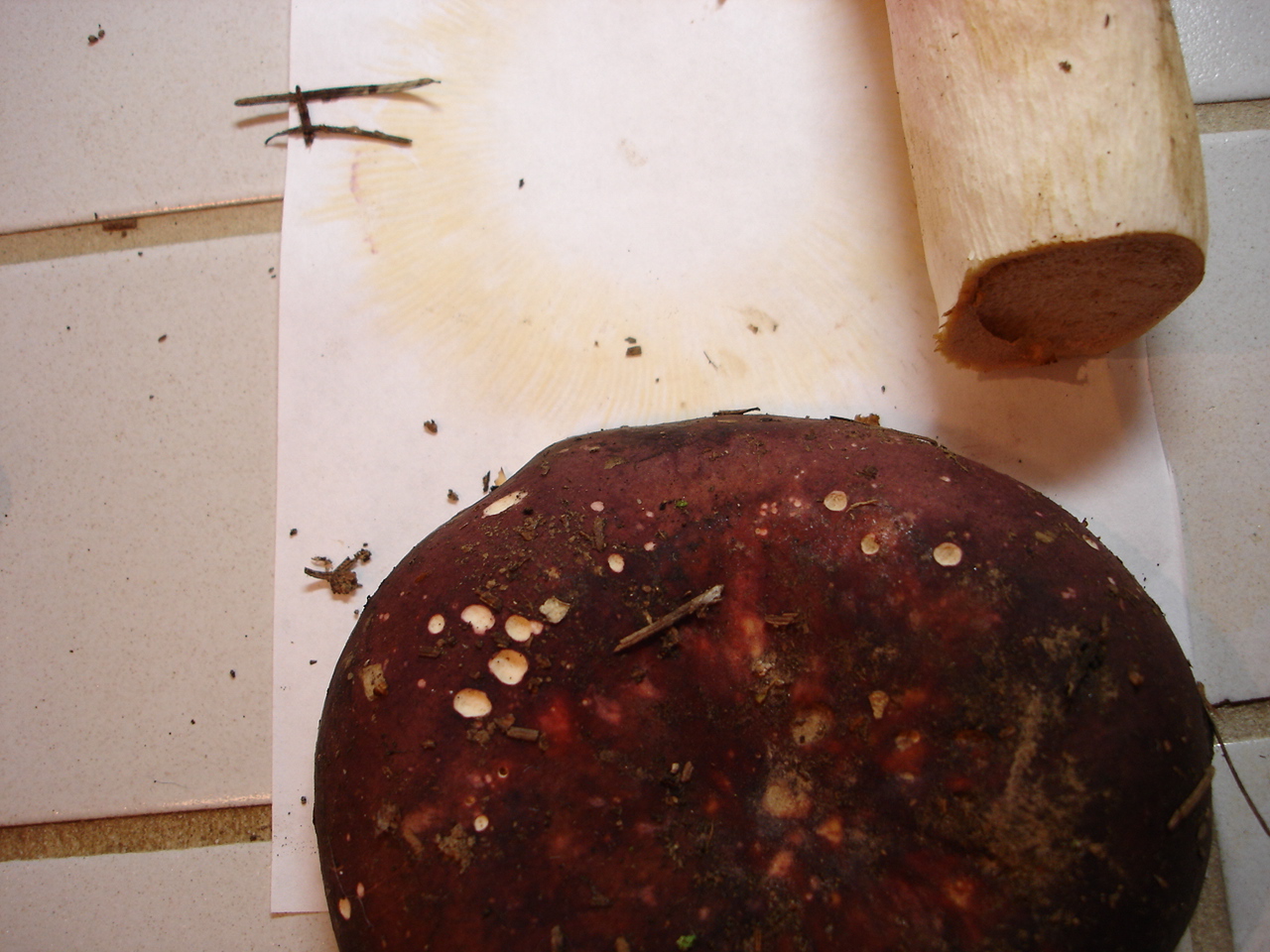
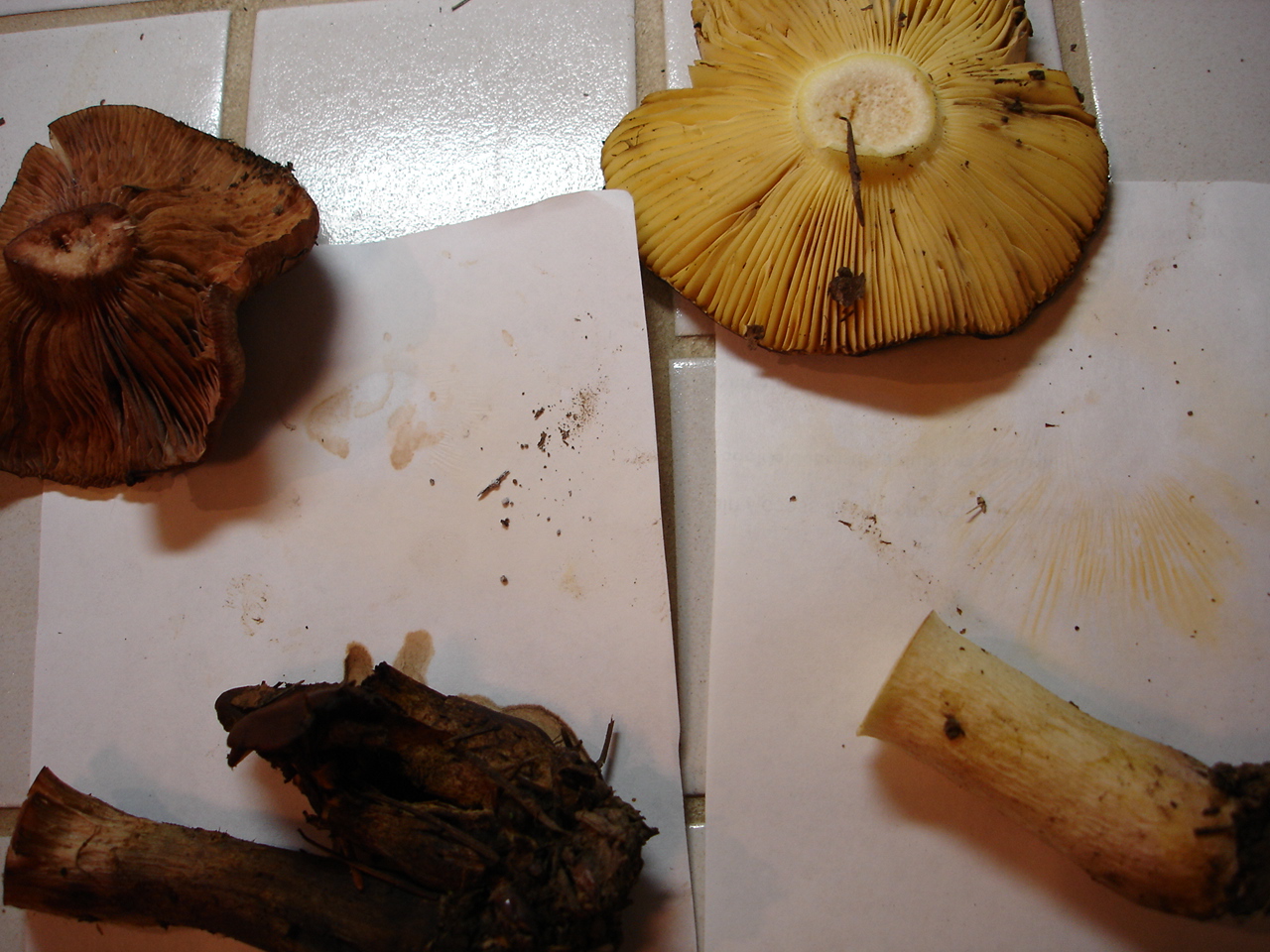
.jpg)